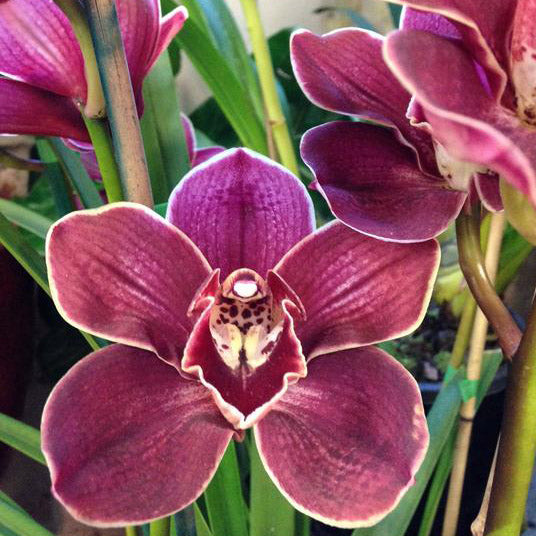
Cymbidium Orchids
Cymbidiums are hardy orchids suitable for growing outdoors in Melbourne’s climate. They grow and flower easily if a few simple steps are followed, and they are not the delicate exotics many people believe them to be.
Position
Good filtered light or sun until 1-2pm is best for Cymbidiums. Deep shade reduces flowering. Hot afternoon sun in summer yellows leaves. Dappled light under a tree or shade house is ideal. In cooler months, move into full sun to encourage flowers. Cymbidiums can be brought inside when in flower, but are not suitable as permanent indoor plants.
Feeding
Orchids have two main growing periods in Melbourne. The leaf-growing period (September–January) requires a lot of nitrogen. After this, less nitrogen and more potash is necessary for flower formation. Use two-part orchid food, or Osmocote once after flowering and again in December/January. Liquid fertilisers can be used monthly until January.
Watering
Water sparingly in winter – rain is usually enough unless it is dry for more than a week. In summer, water 3 times a week, and if it is very hot, daily watering is advisable.
Re-potting
Always use a good orchid mix, as Cymbidiums need good drainage. Do not re-pot too frequently. They like to be very tight in the pot, but not strangled, and generally flower better if not disturbed annually. Divide large clumps or re-pot into next size pot only. On very pot-bound root balls, a knife or spade may be necessary to break up knotted roots.
Pests
Snails and slugs are very partial to flower spikes and are best controlled by pellets. Keep aphids off flower spikes as they disfigure the buds. Scale is the other common pest, easily controlled with Eco-Oil (non-toxic). Orchid virus causes unsightly mottling of leaves but doesn’t kill the plant. There is no cure, only prevention by controlling the pests that transmit the disease.
To Help Flowering
Provide adequate natural light (without yellowing the leaves). Cut off old flower spikes straight after flowering. Don’t re-pot too often (allow to become a bit pot-bound). Feed adequately throughout growing period.
